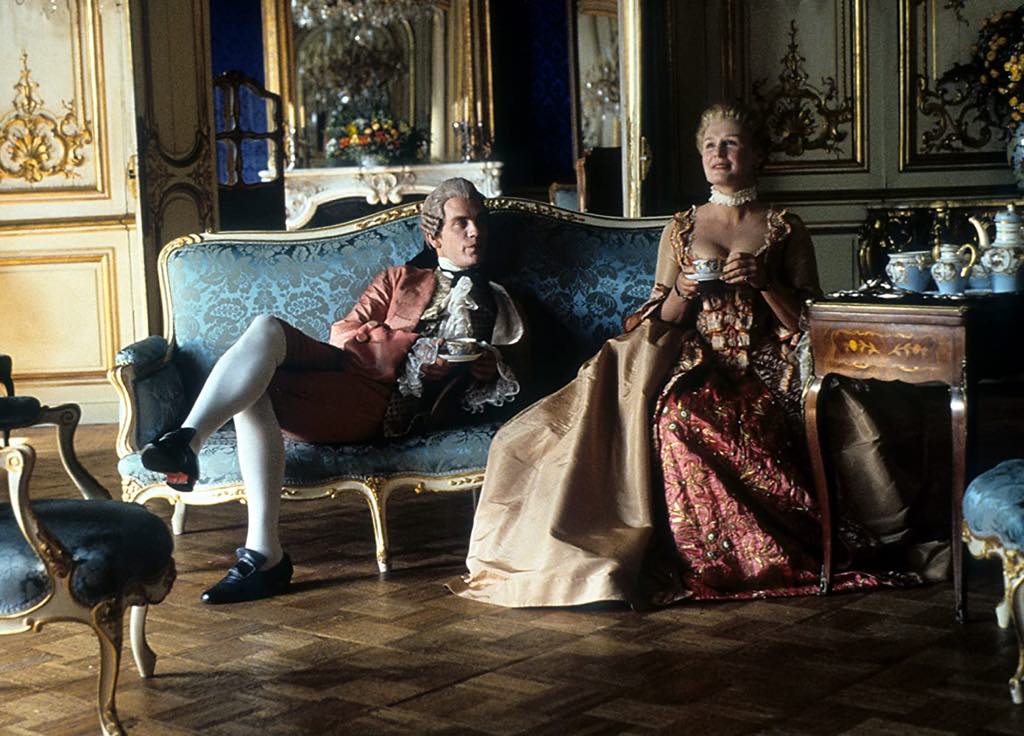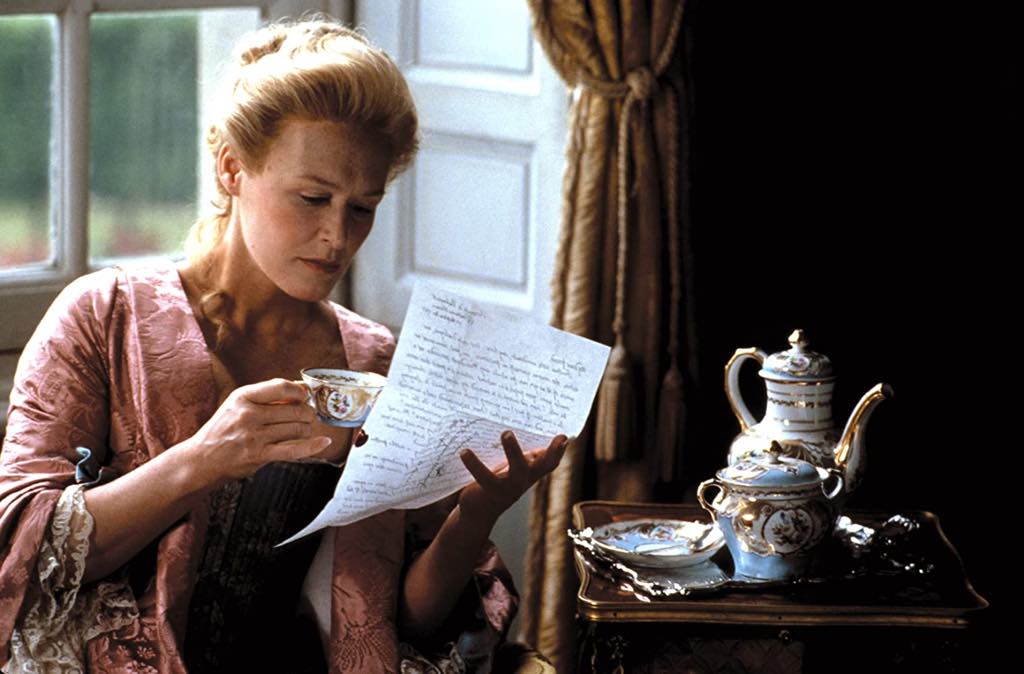
Note to readers: You may choose to read this analysis of Les Liaisons Dangereuses here or listen to it on the audio file at the end of the article.
Paris Update readers of a certain age will undoubtedly know Les Liaisons Dangereuses (Dangerous Liaisons) from Stephen Frears’ 1988 movie adaptation, starring Glenn Close, John Malkovitch, Michelle Pfeiffer, Keanu Reeves and Uma Thurman, or from Christopher Hampton’s earlier stage version. Slightly younger readers might well know it from the 1999 updated cinematic version, Cruel Intentions. But I would hazard a guess that relatively few of their viewers have gone to the source of the story: the novel by Pierre Choderlos de Laclos, first published in 1782.
As wonderful as all those famous adaptations are, I would argue that they only manage to recapture a small part of the novel’s essence, and this is just one reason why I would urge anybody who has not read the original book to take advantage of the current enforced lockdown to read it.
The element that makes Les Liaisons Dangereuses such a complex and effective book is the fact that it is an epistolary novel, that is, a novel made up entirely of letters. The epistolary novel was particularly popular in the 18th century in both France and Britain. Samuel Richardson had already published his Pamela and Clarissa, which Laclos certainly knew about. One of the characters in the Liaisons, the Présidente de Tourvel, even has a copy of Clarissa on her bedside table. In France, the renowned 18th-century French philosopher Jean-Jacques Rousseau had published an epistolary novel, Julie, ou la Nouvelle Héloïse, in 1761, which became the best-selling book of the age.
The major difference between the Rousseau and Laclos texts, however, is in the way each writer exploits the letter format. While Rousseau only includes letters exchanged between two lovers, Laclos brings in several correspondents, giving his book a much more multilayered texture.

Even though the central axis of the Laclos novel revolves around the correspondence between the Marquise de Merteuil and the Vicomte de Valmont as they rigorously plan their seduction of various characters, we are given the contrasting viewpoints of many others, with a variety of letter-writers communicating with a range of correspondents. Sometimes a single incident is described in radically different ways by varying characters in successive letters. For example, often we read chilling descriptions by Valmont or Merteuil of their seduction of various victims, followed by their victims’ very different perspectives on what happened.
Perhaps what truly distinguishes Laclos from Rousseau is the way that every letter is psychologically plausible, written at a time and in a context that makes complete sense in driving the plot forward. Rousseau, by contrast, has the leading male character implausibly continuing to write a letter to his lover after she has entered his room.
One of the most extraordinary missives is the passionate love letter written by Valmont to a pious married woman, Mme de Tourvel (letter 48). We already know from the previous letter from Valmont to Merteuil that he wrote the love letter while using a prostitute’s back as his writing desk. Tourvel interprets the letter as a genuine avowal of love, but our knowledge of the context in which it was written shows it in a very different light.
Young readers can sometimes be extraordinarily moralistic when reading literature, and I would suggest that Les Liaisons Dangereuses is the ideal work for them to read to make them question their assumptions. Often I have had students describe the book as “immoral” because of the depiction of Merteuil and Valmont’s libertine desires and actions. I would say, on the contrary, that the book is many ways deeply moral, but not from the perspective that we might normally make moral assumptions. Merteuil and Valmont construct a rigorous moral system that relies on absolute complicity between the two of them in order to carry out their aims. The moment their complicity begins to crumble, with Merteuil’s famous cry to Valmont, “Hé bien, la Guerre!” (Well then, it’s War!), their whole constructed system crumbles.
Some critics see the fact that the book appeared just seven years before the French Revolution as a foreshadowing of the destruction of libertine aristocratic ideals and the overthrow of the monarchy (all the main characters in the novel come from noble families). But it is probably futile to recast motives because we know what happened afterward, and we must remember that Laclos himself enjoyed the patronage of the Duke of Orleans and that the book was praised and appreciated by members of the royal family, including Marie Antoinette.
To my mind, it is impossible to apply simplistic historical or moral readings to Les Liaisons Dangereuses. The book, with its variety of perspectives, is far too subtle for that. Just read Letter 81, in which Merteuil explains the choices she has made in her life as a woman in a male-driven world, and you will see quite how multilayered the book is.
If you wish to read the book in translation, I would recommend Helen Constantine’s translation in Penguin Classics. Happy reading!
